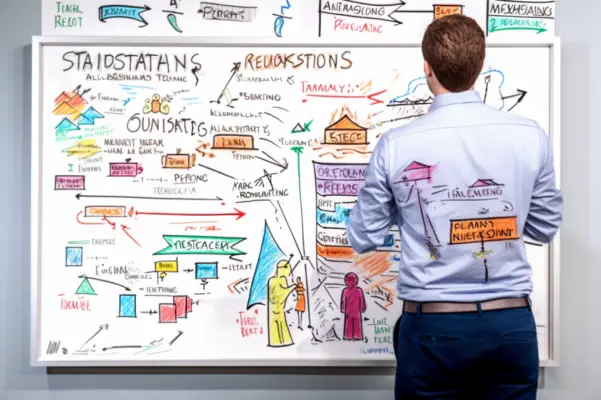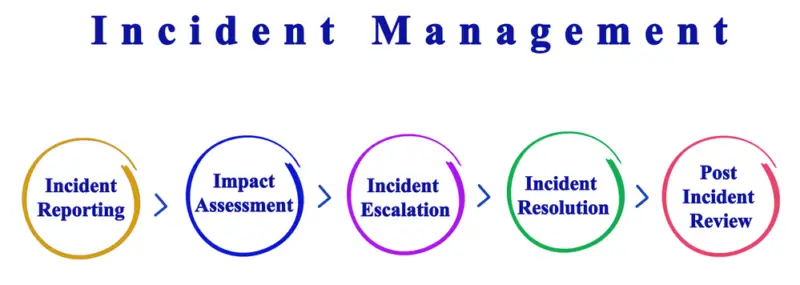Risk management in healthcare is essential for systematically identifying, evaluating, and mitigating potential risks to promote patient safety and enhance overall healthcare outcomes.
It plays a pivotal role in proactively addressing threats, reducing risks of harm, and prioritizing patient well-being through tailored strategies.
By focusing on patient safety as a central tenet, healthcare risk management plan improves care quality, minimizes legal liabilities, and fosters a culture of safety within healthcare organizations.

The benefits extend to financial stability, patient satisfaction, and continuous quality improvement. Understanding the purpose of a risk management program in healthcare is imperative for safeguarding patient well-being and achieving excellent healthcare standards.
Importance of Risk Management Planning
Risk management planning plays a pivotal role in healthcare by systematically identifying potential risks, evaluating their impact on patient safety, and devising strategies to mitigate harm. This proactive approach guarantees that patient well-being remains a central focus, safeguarding individuals from adverse events and improving overall healthcare outcomes.
Planning for Risks
Effective planning for risks in healthcare settings is essential to proactively identify and mitigate potential threats to patient safety and quality of care. Risk management planning plays a critical role in reducing risks of injury and loss in healthcare environments.
By implementing strategies to prevent adverse events and enhance patient safety outcomes, healthcare organizations prioritize the well-being of patients.
Root cause analysis is a key component of risk management planning, allowing for the investigation of causative factors behind sentinel events and the development of preventive measures.
The emphasis on risk management planning, as highlighted by the Patient Safety and Quality Improvement Act of 2005, underscores its significance in fostering a culture of patient safety and continuous improvement within healthcare settings.
Mitigating Potential Harm
Mitigating potential harm through meticulous planning and strategic implementation is essential in ensuring the continual enhancement of patient safety and quality of care within healthcare settings.
Risk management plays a vital role in identifying risks, preventing adverse events such as medical errors, and establishing a proactive system to reduce patient risks.
Healthcare organizations rely on robust risk management planning to safeguard patient safety, uphold quality standards, and maintain financial stability.
By developing tailored strategies and response protocols, healthcare facilities can effectively address potential harm, minimize the impact of adverse events, and enhance overall patient outcomes.
Prioritizing risk management planning not only fosters a culture of safety within healthcare organizations but also helps in mitigating threats to patient well-being and the institution’s reputation.
Ensuring Patient Safety
Ensuring patient safety through thorough risk management planning is paramount in maintaining the highest standards of care within healthcare organizations.
By proactively regarding potential patient risks and health risks identifying potential risks, such as medical errors and system failures, healthcare facilities can implement preventive measures to safeguard patient well-being.
This approach not only aligns with regulatory requirements and quality improvement initiatives but also helps minimize harm to patients by addressing vulnerabilities in healthcare processes.
Effective risk management planning not only prioritizes patient safety but also helps mitigate legal liabilities cover patient specific risks, ensuring a secure environment for both patients and providers.
Ultimately, by focusing on patient safety through detailed risk management planning, healthcare organizations can enhance healthcare outcomes and build a culture centered on the well-being of those under their care.
Role of Healthcare Risk Managers
Healthcare risk managers play a pivotal role in the risk management team overseeing the health care risk management and assessment process. They identify potential risks and vulnerabilities within healthcare settings.
They are instrumental in using risk management technology developing mitigation strategies to address these risks effectively and guarantee patient safety and regulatory compliance.
Additionally, risk managers establish incident reporting procedures. They drive continuous quality improvement initiatives to enhance patient care outcomes and minimize adverse events.
Risk Assessment Process
Conducting thorough risk assessments is a pivotal responsibility undertaken by healthcare risk managers to identify and address potential threats in healthcare settings.
Risk assessment is a systematic process where healthcare risk managers analyze data, review incident reports, and collaborate with interprofessional teams to assess and evaluate risks to patient safety and organizational well-being.
Through this process, risks are prioritized based on severity, likelihood, and impact on patient care and outcomes.
By identifying risk factors and conducting comprehensive risk assessments, healthcare risk managers can develop targeted strategies and interventions to reduce patient health risks mitigate identified risks and enhance patient safety.
The role of healthcare risk managers in the whole risk management outcome and assessment risk management process is crucial for proactively addressing potential hazards, preventing adverse events, and promoting a culture of safety in healthcare organizations.
AspectDescriptionExampleSeverityThe degree of harm potentialMajor surgical errorLikelihoodProbability of occurrenceHigh risk medicationImpactEffect on patient outcomesIncreased infection rates
Mitigation Strategies Development
Healthcare risk managers are integral in the risk management process manager devising mitigation strategies aimed at reducing potential risks to patient safety and financial stability within healthcare organizations.
These professionals assess data to identify areas susceptible to adverse events that could result in patient harm or financial liabilities. By identifying risk factors and prioritizing risks based on severity, they develop proactive measures and targeted interventions to prevent incidents.
Collaboration with interdisciplinary teams guarantees that mitigation strategies are effectively communicated and implemented organization-wide.
The goal expanding risk management is to enhance patient safety by minimizing risks and maintaining financial stability. Through their analytical approach and strategic planning, risk managers play a critical role in safeguarding patients and the healthcare organization from potential harm, ultimately contributing to a secure healthcare environment.

Incident Reporting Procedures
One of the critical responsibilities of risk managers in healthcare settings is to oversee and implement incident reporting procedures.
Healthcare risk managers play an essential role in ensuring that potential risks leading to patient harm are promptly identified and addressed.
Incident reporting systems capture near misses, adverse events, and other incidents, allowing for thorough investigations and root cause analysis. Through these procedures, corrective actions can be implemented to prevent similar occurrences in the future.
Effective incident reporting contributes to fostering a culture of transparency, continuous learning, and improvement in patient safety.
By encouraging timely reporting and thorough analysis, healthcare organizations can enhance their ability to proactively manage risks and strive for continuous quality improvement in patient care.
Continuous Quality Improvement
Risk managers in healthcare settings drive the continuous improvement of quality initiatives by actively identifying areas for enhancement and collaborating with multidisciplinary teams to implement strategic changes.
They play an essential role in health care risk ensuring, promoting patient safety, analyzing performance variations, and enhancing overall healthcare quality.
In achieving these objectives, healthcare risk managers utilize data analysis to pinpoint areas needing improvement and work with diverse teams to develop and implement strategies for quality enhancement.
Through their efforts, medical errors are reduced, patient outcomes are improved, and a culture of safety is fostered within healthcare organizations.
Benefits of Risk Management in Healthcare
The benefits of risk management technology in healthcare are multifaceted, encompassing enhancements in patient safety, assurance of quality care, and preservation of financial stability.
By prioritizing patient safety, healthcare organizations can reduce medical errors and adverse events, ultimately leading to improved patient outcomes.
Additionally, effective risk management strategies contribute to building trust among patients and stakeholders, fostering a culture of safety within healthcare settings.
Patient Safety Enhancement
Enhancing patient safety through effective risk management practices in healthcare is crucial for guaranteeing excellent healthcare outcomes and quality care delivery.
By proactively identifying and mitigating risks, healthcare organizations can greatly reduce medical errors and adverse events, ultimately leading to improved healthcare outcomes.
Additionally, prioritizing patient safety through risk management strategies not only safeguards patients from harm but also ensures high-quality health care delivery.
This proactive approach to risk mitigation contributes to overall patient well-being and satisfaction, creating a secure environment for both patients and healthcare providers.
- Reducing medical errors and adverse events
- Ensuring high-quality care delivery
- Prioritizing patient safety in healthcare decisions
Quality Care Assurance
Effective risk management practices in healthcare are crucial for ensuring high-quality care for patients. Proactively identifying and mitigating risks help in maintaining standards of patient care. Robust protocols shape risk management practices and proactive measures contribute to maintaining high clinical quality, reducing medical errors, minimizing adverse events, and enhancing healthcare outcomes.
Ensuring quality care assurance through our risk management programs is essential for building trust, enhancing reputation, and increasing patient satisfaction.
Healthcare organizations that prioritize risk management create a secure environment for both patients and providers, with patient safety being the top priority in all decisions and actions.
Financial Stability Preservation
Preserving financial stability in healthcare through risk management is essential for ensuring the long-term viability of healthcare organizations. By implementing proactive risk manager strategies, healthcare providers can safeguard their financial well-being and maintain sustainable operations.
Some key benefits of this risk management strategy in preserving financial stability include:
- Minimizing legal liabilities and costly lawsuits.
- Reducing financial burdens associated with adverse events.
- Ensuring timely reimbursement and safeguarding accreditation status.
These measures not only help health care organizations mitigate risks but also contribute to the overall sustainability and growth of healthcare institutions.
Effective financial risk and management plays an essential role in protecting the financial health of healthcare providers while prioritizing patient safety and quality of care.
Risk Management Strategies in Healthcare
Implementing effective risk management strategies in healthcare involves utilizing incident reporting systems and conducting root cause analysis.
Incident reporting systems allow for the timely identification and investigation of adverse events or near misses, enabling healthcare organizations to address underlying issues proactively.
Root cause analysis further explores the factors contributing to incidents, helping to develop targeted solutions and prevent future occurrences.
Incident Reporting Systems
Incident reporting systems play a crucial role in healthcare risk management by facilitating the identification and documentation of adverse events, near misses, and potential risks. These clinical and administrative systems allow for the tracking, analysis, and addressing of incidents to prevent future occurrences.
Key benefits of implementing incident reporting systems include:
- Promotion of a culture of transparency, accountability, and continuous improvement in patient safety.
- Identification of trends, root causes, and areas for improvement to enhance the overall quality of care.
- Ensuring timely and accurate reporting, which is essential for effective risk management and fostering a culture of safety in healthcare settings.
Incident reporting systems are essential tools in maintaining and improving patient care standards and organizational safety protocols.

Root Cause Analysis
Root Cause Analysis is a critical risk management strategy employed in healthcare to uncover the underlying factors contributing to adverse events and enhance patient safety.
By delving into the root causes of errors, healthcare teams can develop corrective action plans that address latent conditions and systemic issues within healthcare settings.
This methodical approach aims to prevent the recurrence of sentinel events, ultimately improving the quality of care provided to patients.
Through Root Cause Analysis, errors are not simply attributed to individual mistakes but are viewed within the broader context of the healthcare system, allowing for a more comprehensive understanding of how to enhance patient safety and mitigate risks effectively.
Root Cause AnalysisHealthcare SettingsPatient SafetyUncover underlying risk factors because of adverse eventsIdentify issues within healthcare systemsEnhance safety protocols
Tools for Effective Risk Management
In healthcare, effective risk management relies on utilizing various risk management tools, to assess and mitigate potential risks. Risk assessment methods help in identifying vulnerabilities and prioritizing areas that require attention.
Risk mitigation strategies aim to reduce the likelihood or impact of adverse events. By employing these tools systematically, healthcare organizations can proactively prevent risks, safeguard patient safety and enhance the quality of care delivery.
Risk Assessment Methods
Effective risk management in healthcare heavily relies on utilizing specialized tools and methods for evaluating and mitigating potential risks. Two important methods for risks assessment in healthcare are Failure Mode and Effects Analysis (FMEA) and Root Cause Analysis (RCA).
These methodologies help in identifying potential failures, adverse events, and underlying causes, prioritizing risks based on severity, frequency, and detectability. By examining consequences and impacts, healthcare professionals can devise appropriate controls and interventions to prevent reoccurrence of adverse events and enhance decision-making processes.
Additionally, security risk assessments play a crucial role in identifying vulnerabilities in protected health information (PHI), ensuring the implementation of necessary safeguards to protect sensitive data from breaches and maintain regulatory compliance.
Risk Mitigation Strategies
Risk mitigation strategies in healthcare encompass a range of tools aimed at identifying and addressing potential risks to enhance patient safety and improve overall healthcare outcomes.
Root cause analysis is essential in pinpointing the underlying causes of adverse events, enabling healthcare providers to implement targeted solutions.
Failure mode and effects analysis (FMEA) assists in prioritizing risks based on their severity, frequency, and detectability within healthcare settings, allowing for proactive healthcare risk management plans and strategies.
Security risk assessments focus on safeguarding protected health information (PHI) by identifying vulnerabilities to prevent data breaches.
Incident reporting systems play an important role in enabling healthcare staff to report and document adverse events for thorough analysis and continuous improvement.
Additionally, clinical practice guidelines serve as standardized tools to reduce errors and enhance patient safety in healthcare environments.
Frequently Asked Questions
What Is the Main Purpose of Risk Management?
The main purpose of proactive risk management system is to identify, assess, and mitigate potential risks across various industries, ensuring organizational stability and minimizing adverse impacts. Proactive and risk management tools and strategies aim to prevent harmful events and optimize decision-making processes.
What Is the Main Goal of the Risk Management System?
The main goal of the risk management system is to proactively identify, assess, and mitigate potential risks that could increasingly impact financial performance in various aspects of an organization. By implementing thorough strategies, risk management plans, organizations aim to prevent adverse events and guarantee operational stability.
What Is the Purpose of Clinical Risk Management?
The purpose of clinical risk management is to identify, assess, and mitigate potential risks in healthcare settings to enhance patient safety and improve healthcare outcomes. It involves implementing strategies to prevent medical errors and adverse events.
What Is the Purpose and Importance of the Risk Management Plan?
The purpose and importance of a healthcare risk management plan may lie in its ability to proactively identify, assess, and mitigate potential risks to enhance patient safety, quality of care, financial stability, and compliance with regulations within healthcare organizations.

Conclusion
Risk management in healthcare plays a crucial role in safeguarding patient welfare, enhancing care quality, and ensuring financial stability.
By proactively identifying and addressing potential risks, healthcare entities can mitigate adverse events and promote a secure environment for patients and healthcare professionals alike.
Through the implementation of effective risk management strategies and tools, the healthcare industry can continually work towards improved healthcare outcomes and sustained patient safety.

Chris Ekai is a Risk Management expert with over 10 years of experience in the field. He has a Master’s(MSc) degree in Risk Management from University of Portsmouth and is a CPA and Finance professional. He currently works as a Content Manager at Risk Publishing, writing about Enterprise Risk Management, Business Continuity Management and Project Management.

